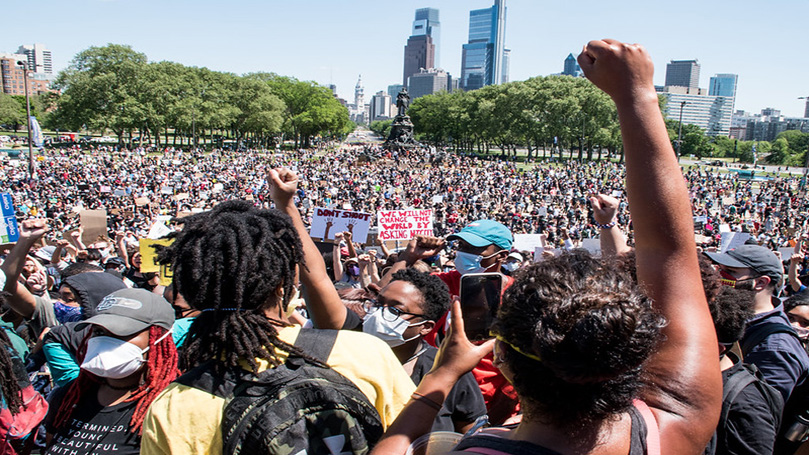
 Cassie Lopez, a Communist Party organizer and resident of Oakland, CA, fights for prison abolition. She began a life of struggle in the Student Non-violent Coordinating Committee and the campaign to Free Angela Davis in the 1960s and 1970s. She visited Davis in jail every day, demanding bail for the falsely accused activist.Lopez recently told a group of prison abolitionists, “I always thought I had to fight injustice. I joined my first picket line at ten years old, and today, I’m still joining picket lines and organizing. Capitalism is not working for us, and it never was working for us.”
Cassie Lopez, a Communist Party organizer and resident of Oakland, CA, fights for prison abolition. She began a life of struggle in the Student Non-violent Coordinating Committee and the campaign to Free Angela Davis in the 1960s and 1970s. She visited Davis in jail every day, demanding bail for the falsely accused activist.Lopez recently told a group of prison abolitionists, “I always thought I had to fight injustice. I joined my first picket line at ten years old, and today, I’m still joining picket lines and organizing. Capitalism is not working for us, and it never was working for us.”
Communists, like Cassie, fight racist oppression and capitalist exploitation for the dignity of all people. We fought to defeat Donald Trump and his fascistic politics. We support the fullest democratic expansion of voting rights. But the struggle for Black freedom and working-class power can’t stop at the ballot box. We share the demand for a “Third Reconstruction,” a revolutionary program based on what W. E. B. Du Bois called “advanced democracy” to address white supremacy and lay the basis for defeating it once and for all. In this pamphlet, we explain our Party’s views as an anti-racist, anti-fascist, working-class organization that seeks to replace the capitalist-imperialist system of domination with a new society, one in which the masses democratically control their communities, workplaces, and the political system. Together we can make a society in which the people and planet, not profits, shape the world. This is the mission of the Communist Party USA.
We struggle for the full power and unity of the multi-national, multi-gendered working-class that fights against the special exploitation and oppression of Black, Brown and Asian peoples; for the right to full equality and against patriarchy and transphobia], We fight for democratic rights: the full equality of nationally, racially oppressed communities; all genders and gender identities; all sexualities; all religious preferences. Party militants believe that the struggle for these democratic rights is integral to the class struggle and central to achievement of the end goal. Democratic struggles help the working-class build power for longer-term fights. As a Party, we recognize the influence of patriarchal white supremacy and settler-colonialism along with the exploitation of labor as among the bases of the development of U.S. capitalism.Therefore, the Party remains committed to educating our membership, and the American people as a whole, on the contradictions of monopoly capitalism, white supremacy, and their impact on working-class solidarity and our planet.
White supremacy and class collaboration
Following the huge growth of basic industry in the 20th century, cities across the country became important zones for economic activity. Compared to the Jim Crow South, these cities with their better-paying jobs were a beacon for Black workers. Because of the demand for labor during the wars, the industrial capitalists increasingly employed African Americans.
Because the white-supremacist pillar of U.S. capitalism remained, Black and Brown workers were marginalized and super-exploited as workers of all nationalities were pitted against each other.
But Black, Brown, and Asian labor were singled out for special treatment.
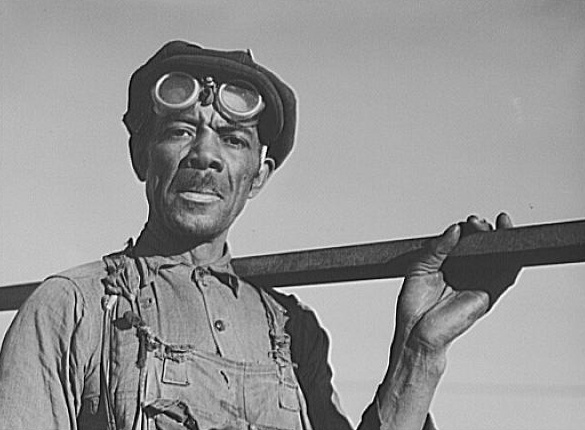 The capitalists reaped huge profits by exploiting a divided industrial working class by race and “skill.” Many white workers believed they benefited from the super-exploitation and oppression of Black and Brown communities. Racist ideas lingered in the minds of the more backward sections of workers.
The capitalists reaped huge profits by exploiting a divided industrial working class by race and “skill.” Many white workers believed they benefited from the super-exploitation and oppression of Black and Brown communities. Racist ideas lingered in the minds of the more backward sections of workers.
Black workers in cities like Detroit, Chicago, Baltimore, Los Angeles, Memphis, St. Louis, Gary, Cleveland, and Birmingham refused to accept this situation and fought racial inequality in the economic, institutional, and political life of these cities. They fought mob violence and recurring day-to-day assaults. Their social struggles gradually changed the institutions and culture of the industrial city, but deep patterns of segregation remained.
In the notoriously anti-labor and anti-Black Jim Crow South, the Party deployed the Popular Front strategy to further assist the already existing organizing drives against segregation and lynching. Communists made decisive contributions to the fight waged by the Black workers in the South, including in the CIO union drives. The activists understood the connection between civil rights and labor rights and connected these struggles towards a mass campaign for working-class power.
When more than 1,200 Black trade unionists met in Chicago in 1972 at the founding of the Coalition of Black Trade Unionists, Bill Lucy, from California’s Bay Area, said, “We are in nobody’s pocket, do not intend to get in anybody’s pocket, and we are going to assume a position of full partners. You see, we don’t want anybody to be making decisions for us any longer, because we are quite capable of making decisions ourselves.”
This statement of independent and self-determining nature of the fight has shaped the Black Freedom Struggle since its inception on colonial shores in 1619.
Black industrial workers demanded immediate improvements to plant conditions. They called for promotions, new job training, and seniority. They also demanded leadership within the international unions that claimed to represent them.
Black workers, with growing class consciousness and great national pride as a people, fought their way into the leadership of some of the unions.
Within a decade of these victories, capitalists began to close down the plants, to move operations to places with cheaper labor, and they gutted the cities. Capitalists refused to save a seat at the table for Black workers, preferring to destroy the table and rebuild it somewhere else.
Billionaires and millionaires paid for massive ideological, legal, and political attacks on affirmative action. Their campaign blamed Black people, immigrants, and women for the economic crisis and for a host of social problems that accompanied the collapse of industry and the cities.
In the 1980s and 1990s, neoliberal privatization and the attack on cities deepened. This attack came in the form of an assault on Black folk who lived there. Suburban white politicians won political capital with racist claims about the bad values of Black city dwellers. They armed the police and used state voting laws to disenfranchise Black voters. The “war on drugs” was used as an excuse for mass incarceration of Black and Brown youth.
They blamed the victims of racism and capitalism for poverty and crime and then punished them.
Housing and education
Racist housing
Black autoworker and Communist Party member Bill Glenn started a non-profit association in 1977, secured a federal grant, and built the first racially integrated, low-income senior living center in downtown Grand Rapids, Michigan. He was fighting two major battles. Since the 1940s, he had seen the city, like many American cities, divided by racist housing segregation. He saw Black and Brown communities relegated to cramped, degraded, and polluted living conditions.
By taking this action, Glenn took up the fight for affordable housing and access to city resources. From the mid-1960s to the late 1970s, Glenn and the Communist Party’s role in the housing struggle led to building at least 1,000 new units of low-cost housing in Grand Rapids.
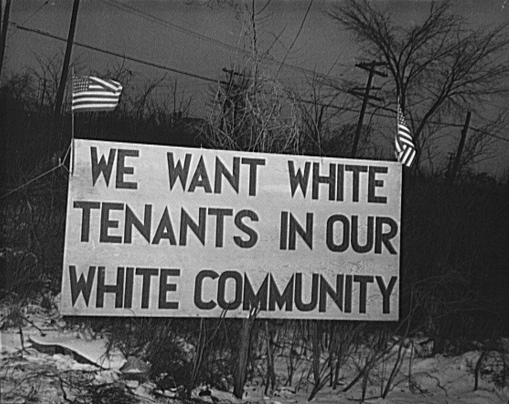 Housing problems rest on a history of systemic racism. Publicly financed and owned, low-income housing is an important solution. But because policy makers created public housing in the mold of racist segregation, they failed to build a better quality of life within communities of color. For example, the Housing Act of 1949 required the segregation of white and Black working-class households, stopping Black urban newcomers from living in white neighborhoods.
Housing problems rest on a history of systemic racism. Publicly financed and owned, low-income housing is an important solution. But because policy makers created public housing in the mold of racist segregation, they failed to build a better quality of life within communities of color. For example, the Housing Act of 1949 required the segregation of white and Black working-class households, stopping Black urban newcomers from living in white neighborhoods.
In the 1970s, the Section 8 program provided new incentives to private developers. Through the program, private builders, landlords, and bankers solidified control over poor Black communities, exacerbating the racist segregation already in place. No longer is housing a public guarantee; instead, these programs are sucking what little wealth our communities have left. By injecting the profit motive into the public sector, privatized housing programs deepen the wounds capitalism inflicts on Black communities.
Since then, massive cuts in public funding for housing have worsened the conditions in which many people are forced to live. Even still, wealthy landlords continue to blame Black people for worsening conditions, as they lead a wave of evictions.
Injury was added to insult during the subprime crisis and the resulting Great Recession when African Americans and Latinos were targeted by banks and mortgage companies. The result was the greatest wealth loss in Black and Brown communities that to this day have not recovered.
The resulting houselessness, a by-product of and contributing factor to the continued impoverishment of communities of color, results from neoliberal policies that intentionally reject a society built around working-class solidarity, cooperation, and community building.
Solidarity and mutual support are basic principles of communism. By physically and socially dividing communities of color from white communities, capitalists can manipulate the lies and stereotypes at the heart of white supremacy.
Segregated education
Housing segregation is closely connected to racist segregation of education and the underfunding of schools in Black communities. While racist segregation in schools formally ended in the 1960s, the white backlash against busing forced the end to real efforts to integrate schools. A racist education system persists and is a basis for the ongoing capitalist super-exploitation of Black and Brown people.
Racist education reinforces community segregation, workforce inequities, and deep racial division across the country. These divisions maintain white supremacy and capitalism and devalue Black lives and communities.
As of 2019, majority-white schools receive $23 billion more than schools in which students of color are in the majority. Rhoda Rae Gutierrez, Chicago activist and parent, outlined the conditions that education reforms have wrought for students, citing “large classroom sizes, no teaching assistants or counselors, high-stakes testing, old textbooks (or not enough of them), lack of air conditioning during hot summer months, and run-down facilities.”
Students of color are more likely to be seen as criminals, rather than as children who need mentoring, discipline, and love. The Department of Education recently admitted that in 2015–16 Black, Indigenous, Latinx, and Pacific Islander students were arrested at significantly higher rates than their white counterparts.
Black students, in particular, were arrested at a rate of over three times that of white students. Education institutions, in line with their role of maintaining white-supremacist culture, actually push students of color into the penal system – priming them for a life of oppression.
We call for more Black teachers, especially within Black-majority schools. Teachers with knowledge of culturally appropriate curricula are vital to restoring the promise of education as a source of power. The abolition of policies that criminalize Black youth, push them to the margins, and deny them full intellectual, creative, and leadership development is a must.
Queer- and trans-affirming classrooms, fully funded resources, well-paid and unionized teachers who commit to diverse youth and communities, who empathetically value the collective well-being of Black families, communities, and power lie near the heart of revolutionary education.
Police and mass incarceration
Police murders
#SayTheirNames. Michael Brown was killed by a cop who didn’t like his attitude and escalated an unnecessary stop for jaywalking into a state-sanctioned murder. Sandra Bland died in police custody after an arrest for similar issues. Daunte Wright was killed when officers escalated a traffic stop into murder. Breonna Taylor was murdered by cops who errantly raided her home without a warrant.
Black people total 13 percent of the U.S. population but are killed by police at more than twice the rate of whites.
These murders and so many others are the reason people are demanding a complete change in policing. The police target Black communities. They target Black men, Black women, and Black trans individuals for persecution, humiliation, and abuse. They serve as the state’s occupation force.
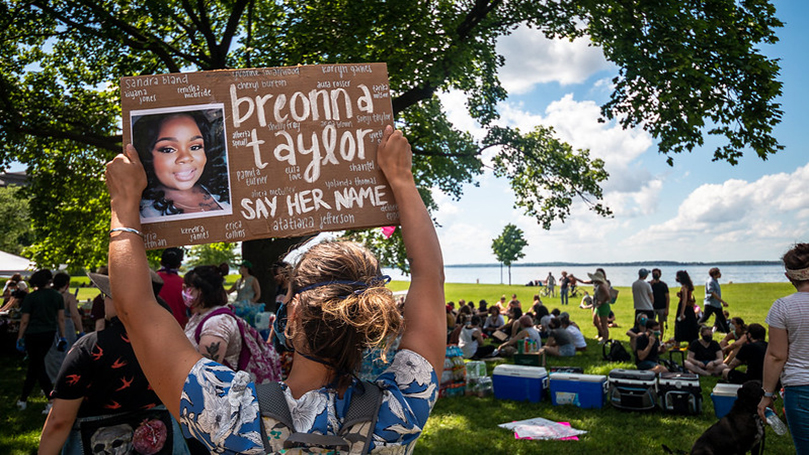
As Communist Party leader Jarvis Tyner writes, “Across the country there is a growing understanding that racist police methods and mass incarceration of Black and Brown people are really a way of terrorizing and controlling poor folks. They want to drive poor people out of their communities so real estate speculators can take over, gentrify neighborhoods, and make huge profits.”
Cops create dangerous interactions that they define as crimes to extract fines and prison sentences from occupied communities.
A Department of Justice investigation of the almost all-white police force in Ferguson, Missouri, found this to be true. The hidden scandal is that this policing system is installed in nearly every city and town across this country.
Mass incarceration
Police violence and abuse is part of a system of “mass incarceration,” the prison-industrial complex that the ruling class designed to control Black, Latinx, and other working-class communities.
This system, beginning with the school-to-prison pipeline, extends into the working lives of millions of Black people. It has also been called “the New Jim Crow.” This system includes policing, imprisonment, capital punishment, torture, and war. For many, the remedy is abolition.
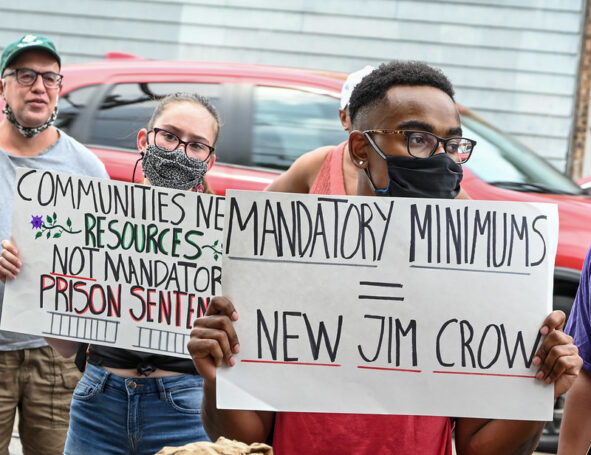 We demand the complete end of mass incarceration, to strike at the heart of systemic racist oppression. Gradual piecemeal reform simply is no longer an option.
We demand the complete end of mass incarceration, to strike at the heart of systemic racist oppression. Gradual piecemeal reform simply is no longer an option.
Since the #BlackLivesMatter uprisings began in 2014 and shook the country again in 2020, more and more people want far-reaching changes in how we understand and enact public safety. The police as an institution doesn’t keep us safe or solve crimes. They endanger our lives every day. They have been militarized with unnecessary weapons and expensive surveillance technology, and they view people in the community as criminals and as a threat.
Tyner, a resident of New York, stated that the city’s infamous racist “stop-and-frisk” policy wasn’t even about stopping criminals. “It was about making [life] unbearable, by putting the community under siege, like martial law. Mass incarceration of Black and Latinx youth is designed to criminalize and impoverish us for decades,” he said.
This is why cops approach with their hands on their guns, shouting threats and commands, and are prepared to kill. And they do kill.
Community control
Many reform measures are simply old policies in new clothes. Reformers throw more money at the police, give them sensitivity training, and make them promise to be nicer. Those reforms were tried in Minneapolis just before Derek Chauvin’s callous slaying of George Floyd. They were in force in Baltimore before a gang of cops brutally murdered Freddie Gray and got away with it. They were part of the deal in New York City before several cops choked Eric Garner to death.
Congresswoman Cori Bush of St. Louis said, “For those who think spending more on policing works, look at St. Louis. We spend more per capita on police than 85% of police depts, yet 68% of violent crimes go unsolved. And police kill us at the highest rate in the nation.”
Police reforms always fail. “We see the police as not only instruments of class exploitation and protectors of private property; we also see them as perpetrators of racist and political repression and part of the military enforcement of national oppression,” says Frank Chapman, prison activist and director of the National Alliance Against Racist and Political Repression.
Imagine a new concept of public safety. It begins with community control. Communities should be able to define what they need for public safety. They should directly control all coercive forces and social welfare programs they see as essential in balancing freedom and dignity with public health and antisocial behavior concerns.
For many communities, this may mean the abolition of the existing police forces, jails, and prisons. It will mean creating altogether new ways of promoting public safety.
Major triggers for police intervention like substance abuse, mental health crises, and physical violence arise from desperation related to poverty, and the lack of equal, fair, and dignified access to social institutions such as education, health care, and jobs.
Changes to policing will not be permanent without a radical, basic change in U.S. society. We demand an end to the systemic and institutional racism that has devastated Black urban communities.
Economy
Essential workers
The COVID-19 pandemic exposed the truth about U.S. capitalism: it doesn’t care about Black lives. When the pandemic hit, people began to praise “essential workers,” the group of people expected to risk their lives to make capitalism continue to work.
As one “essential” worker wrote in the People’s World, a publication of the Communist Party, the pandemic and the definition of “essential” forced the working class to “determine if it’s worth propping up an economic system that makes poor people choose between work and death.”
Despite structural unemployment in the Black community at double that of whites, Black people are overrepresented among “essential workers.” In industries such as emergency services, transportation and warehouse, government and community services, healthcare, and communication/IT, Black people are overrepresented.
Because of racism, however, Black essential workers are paid the lowest wages with the fewest protections. The largest “essential” industries are food/agriculture and health. In health, for example, “essential” Black workers make about $7 less per hour than “essential” white workers.
Typical wages in the food harvesting, processing, and distribution industries are around $12 or $13. While media commentators and politicians “praised” essential workers for their sacrifice, few called for showing respect with a living wage.
People who live in majority-Black cities – Atlanta, St. Louis, Detroit, Memphis, Baltimore – or in majority-minority cities like Chicago, Oakland, Houston, Philadelphia – have to earn between $30 and $40 per hour for a household of three, to cover normal living expenses. Most people are not paid that much. Instead, they work more than one job, more than 40 hours per week, or have simply given up.
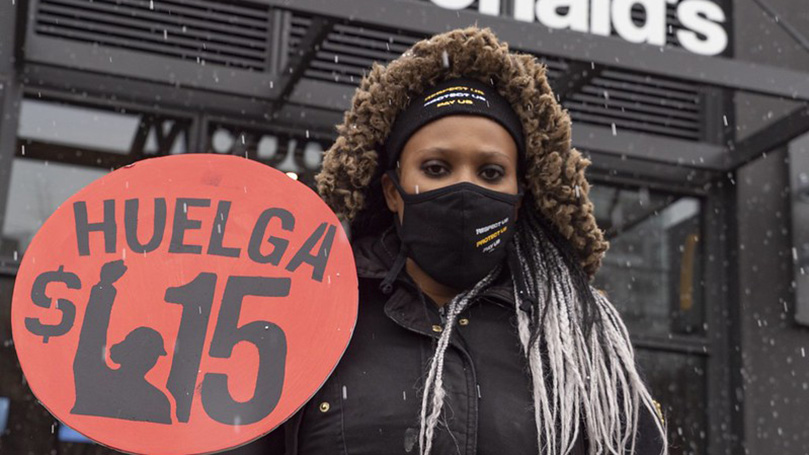
Minimum wage
Capitalists, right-wing politicians, and corporate media worked overtime to block even the most basic demands for a modest minimum wage increase to $15.
If the minimum wage rose to $15, 32 million workers would see a dramatic increase in pay and an ability to better provide for themselves and their families. One-third of all Black workers and more than one-fourth of Latinx workers would be raised over the poverty line.
Black and Brown women are over-represented as the lowest-paid workers and are about one-fourth of all workers who would get a raise.
Black and Brown workers are paid 10%–15% less than white workers with similar job descriptions and educational backgrounds, so a raise would bring the largest benefits to Black and Latinx workers: about $3,500 annually for a year-round worker.
We demand jobs with living wages, improved and fully funded schools, universal, free access to healthcare, an end to environmental pollution, and strengthened bonds of solidarity. Black workers need jobs with dignity, financial security, the right to join unions, and control of their communities.
Labor movement
One force that Black workers (and all workers) need is a militant, anti-racist labor union movement. Black workers have been a pillar of the labor movement.
Increasingly racist presidential administrations – Nixon to Reagan to Bush to Trump – fought the unions tooth and nail, gutted public and social services, and protected corporations as they eliminated unions, drove down wages, rewarded the wealthy and powerful, and pushed Black workers back into the worst, lowest-paid, and most dangerous jobs.
The PRO Act is a proposed law that would strengthen the right of workers to join and organize unions. It would build the power of Black workers to fight systemic racism and economic inequality. Because Black workers are strategically located as “essential” workers, the backbone of the economy, they would, in alliance with the whole labor movement and working class, be a force for democratic change and social progress.
Now, more than ever, the inequities “essential” Black workers face need to be resolved with better wages, free access to healthcare, and essential safety protections that collective bargaining and union contracts provide. These changes can happen with a more powerful working class, an organized and united working class.
The Communist Party’s view of labor and the recent pandemic crisis is summed up by national Party co-chair Joe Sims, who revised the slogan to maintain “social distance” during the pandemic. He called for workers to be “physically distant but socially close.” Strengthen solidarity and allyship in the struggle, he said.
Healthcare
COVID-19 racist disparities in health
Overrepresentation in “essential” work, systemically poor access to healthcare, higher rates of poverty, and political abandonment left hundreds of thousands of Black and Brown people at higher risk of COVID-19 infection and death.
Stuck in work that rarely could be done at home, Black workers were forced to choose between work and their health.
Public health experts, community organizations, labor unions, media personalities, even politicians came to see that structural racism was the primary cause of this desperate situation.
So far, they have done little to fix it. This is what the Communist Party fights to change.
Capitalists, right-wing politicians, and conservative media personalities on the other hand blame the victim. They insist that health is a matter of individual choices, and believe that it is okay for hundreds of thousands, even millions to die in the name of freedom.
We know, however, that ending a public health crisis requires a collective effort and social transformation.
According to the 1%, health care must be earned, and access is determined by income. The wellness industry, based on individualist notions of hard work and personal habits, is a $4.5-trillion-a-year industry. This ideology implies that some people simply deserve health and others don’t.
In the end, we’re faced with choosing the value of our health on our own. Between the financial cost and the time it takes to focus on “getting better,” we’re left to choose between expensive healthy options and the rent or the gas bill.
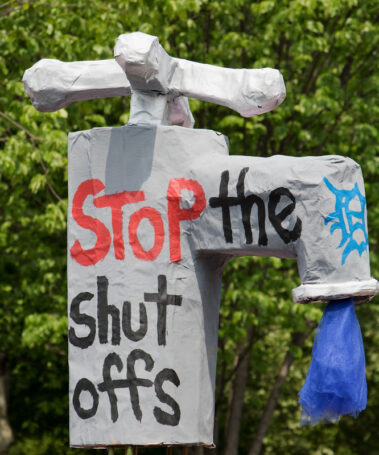 Just to begin to be healthy, we must ask tough questions. For example, why, at the beginning of the COVID-19 pandemic, did low-income, primarily Black homes have their water shut off on a large scale? Why are food deserts in poor, urban areas so prevalent? Why are the medical complaints and perception of pain of Black Americans often dismissed by physicians? Why was the water supply of Flint — a predominantly Black city — switched to a poisoned source? Or, as a study of LA County from 1970 to 1990 showed, why are toxic waste facilities most likely to be built in minority communities?
Just to begin to be healthy, we must ask tough questions. For example, why, at the beginning of the COVID-19 pandemic, did low-income, primarily Black homes have their water shut off on a large scale? Why are food deserts in poor, urban areas so prevalent? Why are the medical complaints and perception of pain of Black Americans often dismissed by physicians? Why was the water supply of Flint — a predominantly Black city — switched to a poisoned source? Or, as a study of LA County from 1970 to 1990 showed, why are toxic waste facilities most likely to be built in minority communities?
How do workers with multiple jobs, who depend on public transit, or are single parents find “free” time to relax, let alone afford yoga/meditation classes or the gym? How does “hard work” or “wellness” fit into this equation?
Racism adds an entirely new dimension. It’s not enough to say that racism is an offshoot of classism when the totality of racism and racial trauma has concrete effects on Black communities.
Structural racism and racist trauma show the deep significance of mental healthcare, a topic that is discussed far too little. Although recent studies show the undeniable links between mental illness, developmental disorders, and suicide rates on one hand and exploitation and racist oppression, mental health experts dominate the topic with self-care discourse, suggesting we should take more time to relax, do yoga, eat better, and breathe right.
These experts are right. But when workers are confronted with over-work, expensive prescriptions, therapy, hospitalization, and institutionalization costs (on average major depression can account for about $11,000 in costs), they typically go without.
In 2020, suicide rates among Black people increased, while rates dropped for white people. This fact speaks to the duality of how the pandemic affected people in America. This racist duality also surfaced during the opioid crisis. When white people suffered from addiction inflicted by a manipulative drug industry, politicians and medical experts reacted swiftly with empathy describing it as a public health crisis. When Black communities have been caught in cycles of addiction and abuse, the state labeled it a war and sent in the cops, and prison populations swelled.
Black Americans are more likely to be misdiagnosed with extreme disorders like schizophrenia than mood disorders. Black youth are more likely to confront punitive measures for their mental health, often pushed into the juvenile legal system rather than receiving medical attention.
Given these conditions, it’s no wonder that only about 31% of Black adults with mental health conditions receive care.
The current healthcare system and subsequent approaches to mental health are a consequence of capitalism; however, the issue of racism in determining human value, who has earned access to healthier foods and clean water, and who deserves (mental) health is not secondary to our fight.
Why Join the Communist Party
The Communist Party stands for democratic rights, full equality, freedom, and socialism. It is the party of Claudia Jones, Edna Griffin, Mildred McAdory, Debbie Bell, Henry Winston, James Jackson, W. E. B. Du Bois, Angelo Herndon, Ferdinand Smith, and Alphaeus Hunton.
It is the founder of the American Negro Labor Congress, International Labor Defense, the National Negro Congress, the Civil Rights Congress, the Southern Negro Youth Congress, the Council on African Affairs, the W. E. B. Du Bois clubs, and the Southern Conference for Human Welfare. We joined others in helping initiate the National Alliance Against Racist and Political Repression, the National Anti-Imperialist Movement in Solidarity with African Liberation, and the Black Radical Congress.
Today, it is a nationwide political party with deep roots in community organizations, the labor movement, and struggles to defeat Trump and to remove his followers from power. The Party is a network of statewide districts and local clubs that strategize and organize to build working-class power.
The People’s World produces news, commentary, and analysis about democratic struggles, labor movement actions, and the fight to defeat Trumpism and neoliberalism each day. It reaches tens of thousands of unique readers weekly. The Communist Party produces multiple online forums for education, actions, and commentary on Youtube, multiple social media platforms, and virtual webinars.
In addition to this powerful tool of education and knowledge, the Communist Party organizes towards working-class power by supporting, participating in, and leading many communities in the fight against racism. More and more communists are running for elected office and are taking on the forces of neoliberalism, white supremacy, and capitalism.
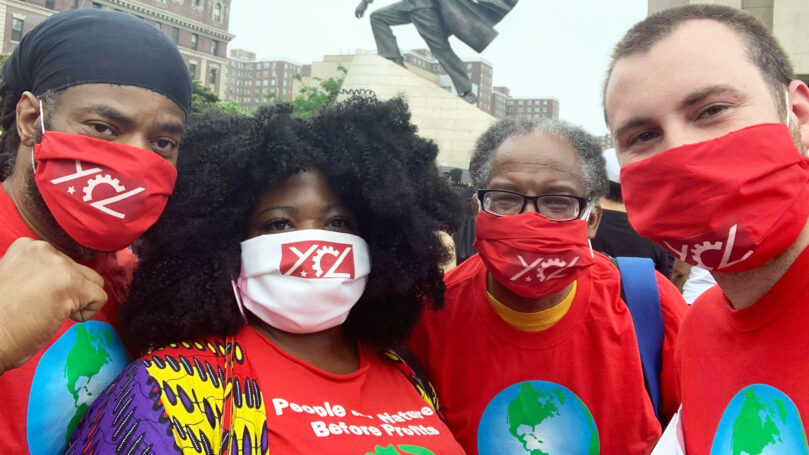
The Party is linked to an international movement of communist parties and democratic organizations that amplify the voices of the world’s working class and colonized peoples in the struggle against U.S. imperialism and capitalism.
Party national co-chair Joe Sims recently stated in an international report, “In the U.S. [the Communist Party seeks] socialism based on U.S. conditions, history, and culture, founded on people’s democracy and workers’ struggle, one we call Bill of Rights Socialism. What is new in the U.S. today is that the socialist idea is growing in strength and is blossoming into a socialist moment.”
The Party is guided by a revolutionary theory of anti-racist working-class unity. This principle shapes our collective choices of tactics, our voice, and our power as we move together forward.
As retired Executive Vice Communist Party Chair Jarvis Tyner stated, “The fight is not over. The war is not over. We are not free. The road to freedom is no easy struggle. If we walk together, we can win that fight. That’s what we need to do.”
Images: Protest for George Floyd, Joe Piette (CC BY-NC-SA); African American railroad worker, Jack Delano, Library of Congress (no known restrictions); “White Tenants” sign, Wikipedia (public domain); Breonna Taylor, ken fager (CC BY-NC-SA); Protest of mass incarceration, Joe Piette (CC BY-NC-SA); Fight for $15, Milwaukee Teachers’ Education Association (CC BY-NC 2.0); Stop the water shut-offs, Becker1999 (CC BY 2.0).


 Join Now
Join Now